Table of Contents
With the arrival of spring seasons, every living thing embraces life and experiences the joy of full-bloomed flowers. The lush green spaces bring zeal and zest to your outdoor space. So, my lovelies, spring is here, and it’s time to prep for spring gardens. With our article guide, you can rev up your gardening game. From picking out gardening buckets to choosing the gardening tools, each step is vital in crafting a visually appealing heaven. You can choose a variety of refreshing and vibrant flowers to elevate the look of your outside. So, to help you out, we have meticulously crafted a guide to transforming your oasis into a retreat. Without further ado, let’s get into the guide on how to create a garden filled with spring flowers.
Spring Gardens: Bring Life to Your Backyard
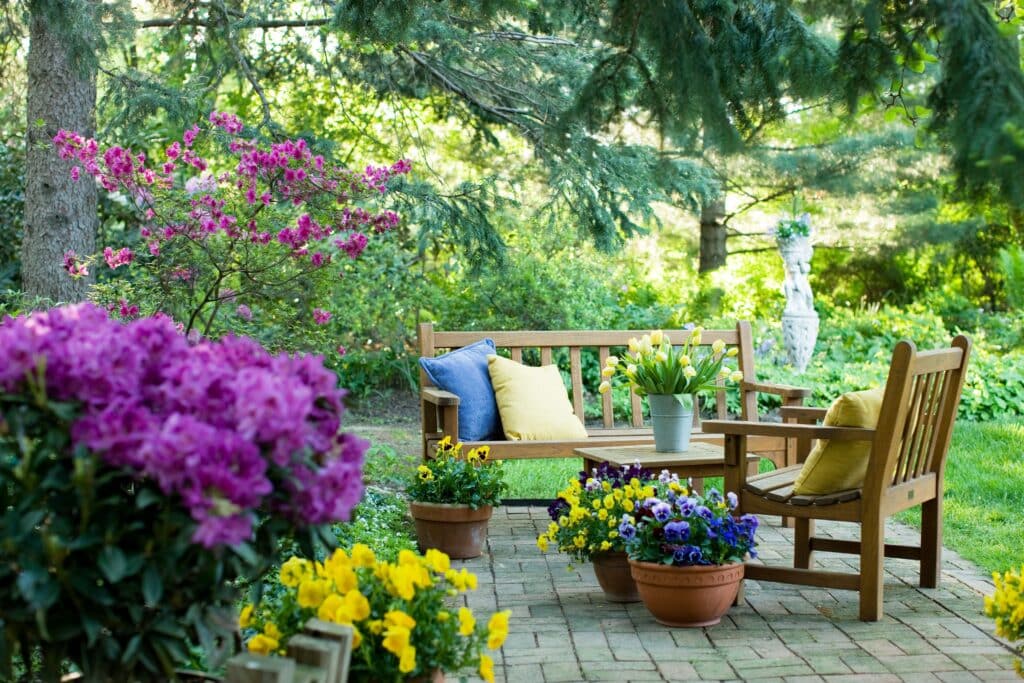
To create a rich and stunning display of blooms, designing a spring garden requires careful planning and consideration of many elements. Here’s a comprehensive how-to to help you design your own springtime haven:
1. Assess Your Area Perfect for Spring Gardens
Evaluate your outdoor space first, whether it’s a large garden or a small balcony. Take into account elements like the type of soil, sunshine exposure, and available space. Your design decisions will be guided by this basic assessment. For instance, you might use vertical gardening options or spring container gardens if you’re short on room.
2. Create a Floor Plan
Draw out the layout of your garden area, specifying where you want to include garden beds, walkways, sitting places, and other elements. Your design will be based on this visual representation.
3. Select Your Plants Suitable for Spring Gardens
Choose a range of spring-blooming flowers and plants that are suitable for your unique environment. As well as later bloomers like peonies and irises, think about adding early spring bloomers like tulips, daffodils, and crocuses. Additionally, to give your environment more texture and interest, include some flowering trees and bushes.
4. Consider Accessibility
Another important tip to mention here is taking care of accessibility. Consider every person’s accessibility while planning a garden in a public area or an apartment building like the Spring Gardens Apartments. Incorporate seating places, wheelchair-accessible walkways, and amenities like wheelchair-accessible showers.
5. Assess the Season of Growth
Remember how long the growing season lasts where you live. Selecting plants that will thrive within those shorter growing seasons is important in locations with shorter growing seasons. However, you have more options when choosing plants if you live in an area with longer growing seasons.
6. Divide Perennials
To renew and promote proper growth, divide perennials in your garden beds in early spring if you already have them established. Make sure each division of the plants has enough roots and leaves by carefully lifting and dividing them with a pointed spade.
7. Implement Landscaping Features in your Spring Gardens
To add visual appeal and texture to your spring garden, consider implementing landscaping features like Bluff Gardens or Gardens at Quail Springs, in addition to flower beds. For marking garden borders and pathways, add features like mulch, rocks, and edging.
8. Remove Dead Growth
Make it a priority to remove any dead or diseased growth from your garden beds as part of your spring gardening checklist. This lessens the possibility of illness and pest problems while additionally improving air circulation.
You can create a gorgeous spring garden that will delight you and your guests all season around by following these steps and incorporating spring gardening tips into your design process. Your garden can grow into an exquisite haven of color and scent with thoughtful design and upkeep.
However, you can also check out other amazing ideas for a perfect spring garden.
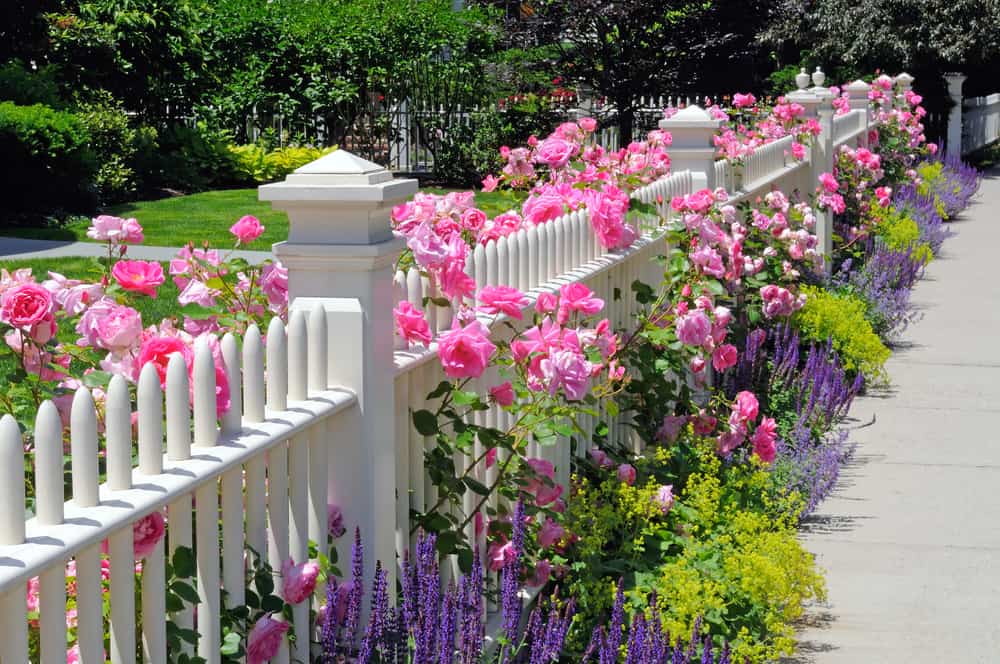
Spring Gardens Checklist: Transform Your Backyard into an Oasis
When you consider designing a garden, especially for spring, here is something you need to know. Spring gardening checklist makes sure that you are following each and every step needed to create a heaven in the outside area. So, let’s go through the checklist in detail.
1. Inspect Your Garden Beds for Spring Gardens
Look for any signs of damage, such as compacted soil or erosion, in your garden beds. Regrade as necessary, add mulch or aerate the soil to address any problems. To avoid waterlogging, check the drainage in your garden beds as well, particularly in places like Harbor Springs.
2. Prune Trees and Shrubs
To promote optimal growth and maintain their shape, trim back any dead or overgrown branches from trees and shrubs. This method boosts air circulation and sunlight penetration in addition to improving the look of your landscape.
3. Prepare Soil for Creating Captivating Spring Gardens
To increase the nutrient content and texture of your soil, mix it with organic matter like compost or seasoned manure. Making sure your plants have access to the nutrients they require to flourish depends on you completing this step.
4. Plant Cool-Season Vegetables
Take advantage of the early spring’s colder temps to grow plants like lettuce, spinach, kale, and peas that do best in cooler climates. The softer weather of early spring is ideal for these veggies.
5. Keep an Eye out for Pests and Diseases
Pay attention to your garden for signs of pests and illnesses, such as chewed leaves, yellowing foliage, or strange markings. When feasible, use organic pest management techniques like hand-picking pests or applying insecticidal soap. As seen in Bluff Gardens Harbor Springs, this keeps your garden healthy and beautiful.
6. Mulch Garden Beds for Spring Gardens
To prevent weeds, hold onto moisture, and control soil temperature, mulch your garden beds. For this purpose, organic mulches like straw or crushed bark work well. They also provide your garden with a lovely aesthetic touch.
7. Fertilize Plants
To give your plants the nutrition they require for strong development and an abundance of flowers, feed them with a balanced fertilizer. Whether your plants are veggies, perennials, or floral annuals, pick a fertilizer made especially for them.
8. Water Wisely
Adjust your watering schedule based on the demands of your plants and the weather. For better drought-resistant and deep root growth, water sparingly but deeply. To supply water straight to the root zone, think about adding soaker hoses or a drip irrigation system.
9. Plan for Summer Blooms
Don’t just concentrate on springtime blooms; also, get your garden ready for summertime. To guarantee a year-round display of beauty in your garden, research and choose summer-flowering plants that are adaptable to your climate and soil type.
You can make sure that your garden thrives with the vibrant hues and rich greenery that define beautiful spring gardens by following the above-mentioned spring gardening checklist. Furthermore, taking care of potential issues guarantees that your garden stays vibrant and healthy, ready to draw in guests and bring you happiness all through the season and beyond.
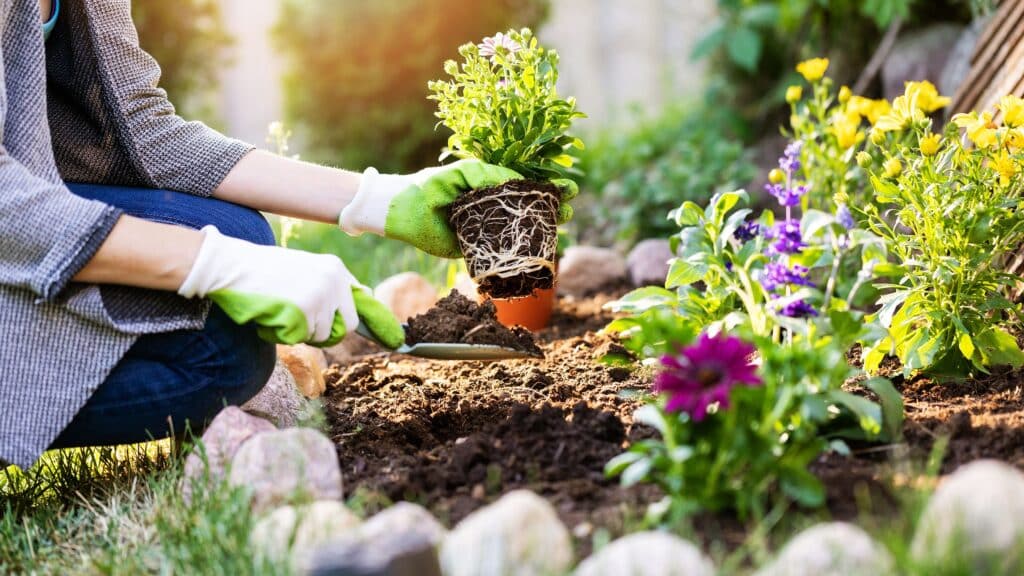
Spring Symphony: Orchestrating the Best Plants, Flowers, and Vegetables for Your Garden
We have gone through the checklist and tips to design a perfect garden; now, let’s decide which flowers will go best with your spring container gardens.
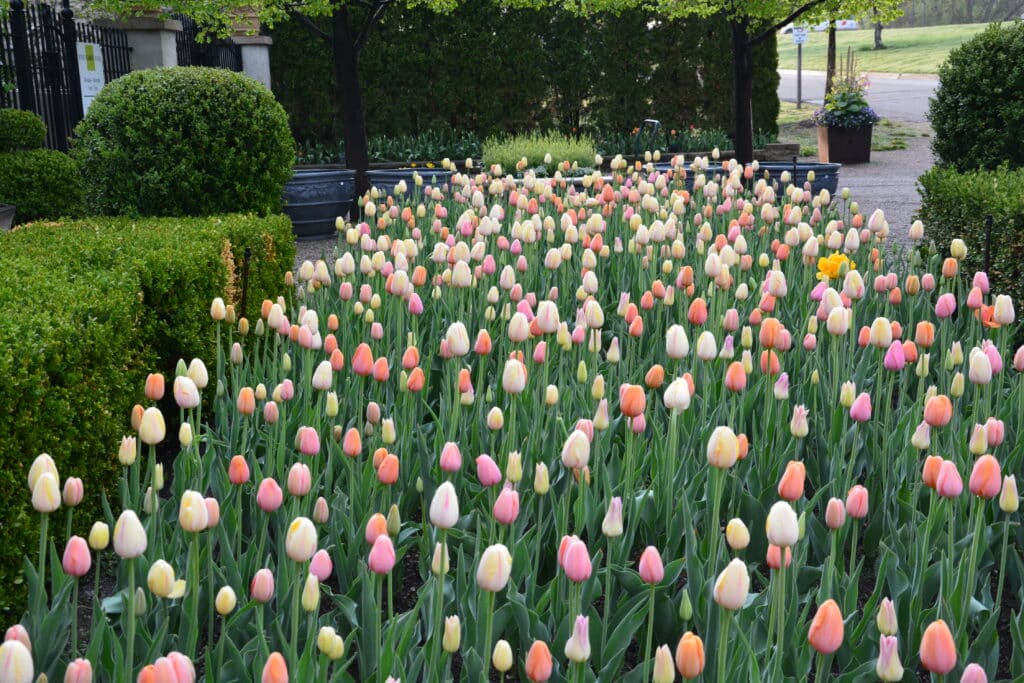
1. Tulips Adding Vibrant Colors
Known for their exquisite blooms and vibrant colors, tulips are a traditional springtime flower. They are available in many different colors, such as red, yellow, pink, purple, and white. Tulips are ideal for providing a splash of color to garden beds or containers since they like full sun and well-drained soil.

2. Daffodils for a Soft Beauty in Spring Gardens
Another renowned spring flower is the daffodil, sometimes referred to as the narcissus. They have cheery trumpet-shaped blooms that are orange, white, and yellow in color. Daffodils are perfect for naturalizing in lawns and forested areas since they are resistant to deer and are easy to grow.
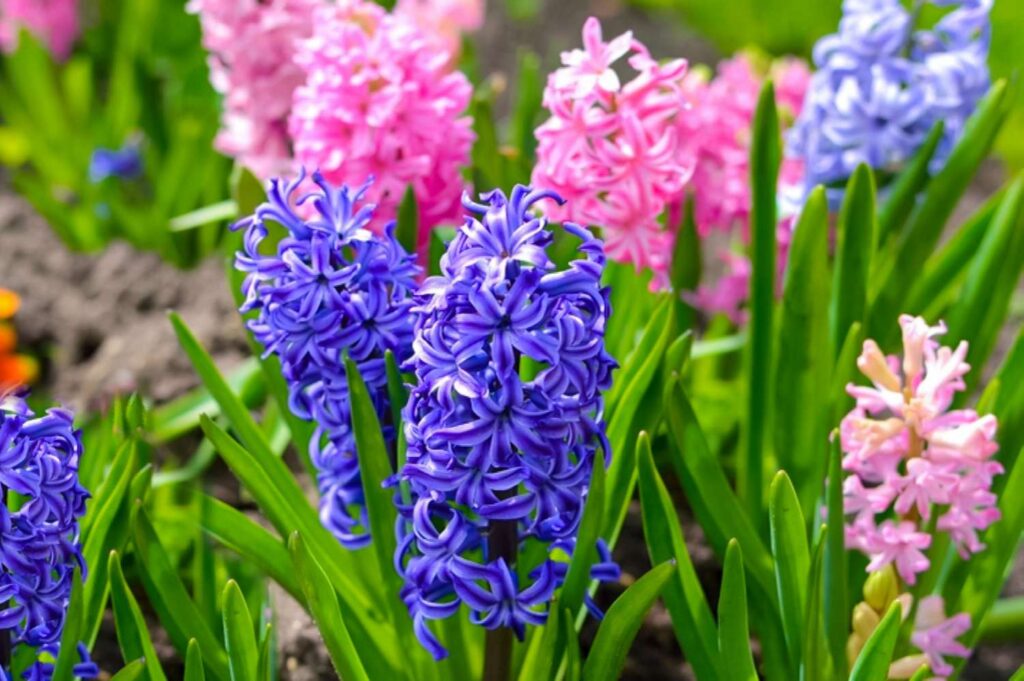
3. Hyacinths for Added Fragrance in Spring Gardens
Prized for their brightly colored blossoms (blue, purple, pink, and white), hyacinths are highly fragrant. These bulbs bloom in spring and do greatest in well-drained soil that gets partial to full sun. Hydrangeas are fantastic for large-scale plantings, borders, or pots where their scent can be enjoyed up close.
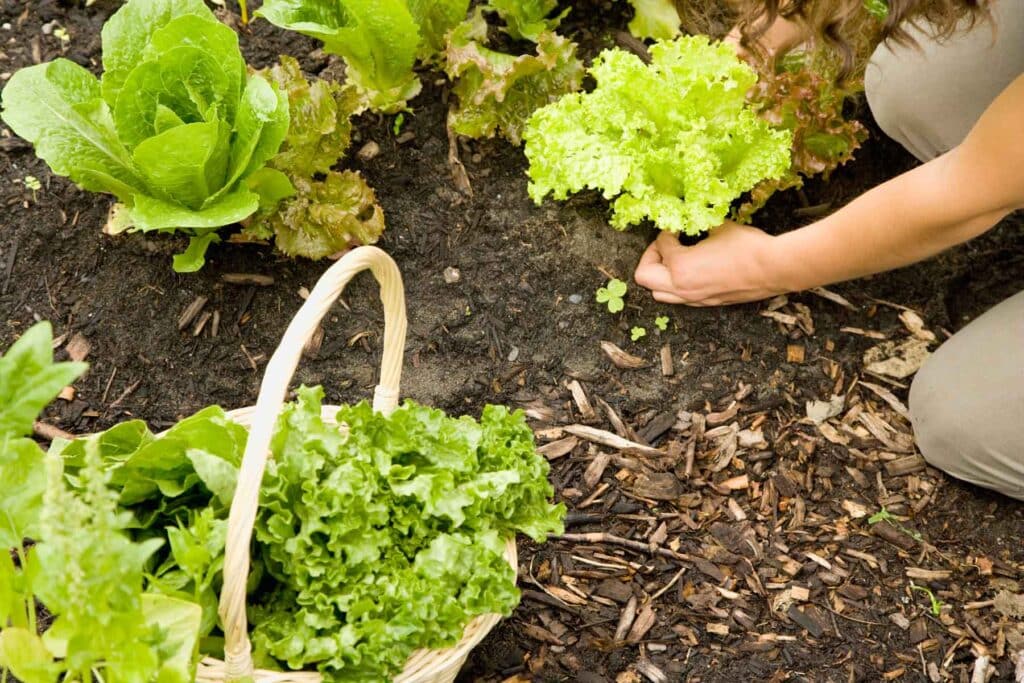
4. Lettuce: A Perfect Veggie in Spring Gardens
Due to the mild spring temperatures, lettuce is a cool-season vegetable. There are numerous varieties of it, such as butterhead, romaine, and leaf lettuce. Growing lettuce from seed or transplants is a simple process, and it may be picked seasonally by removing the outer leaves as needed for sandwiches or salads.

5. Spinach
Packed in calcium, iron, and vitamins A and C, spinach is another food that grows well in the cool season. It works well in spring gardens since it likes cooler weather and can withstand mild frost. You can harvest spinach by cutting the entire plant or by plucking each leaf.

6. Peas: Traditional Veggie of Spring Gardens
A traditional spring food, peas do best in colder climates. Peas come in two primary varieties: snap peas, which are eaten whole with the pod, and shelling peas, which are plucked for the sweet, soft peas inside the pod. Peas can be grown on trellises or other supports to conserve space; they like full light and well-drained soil.
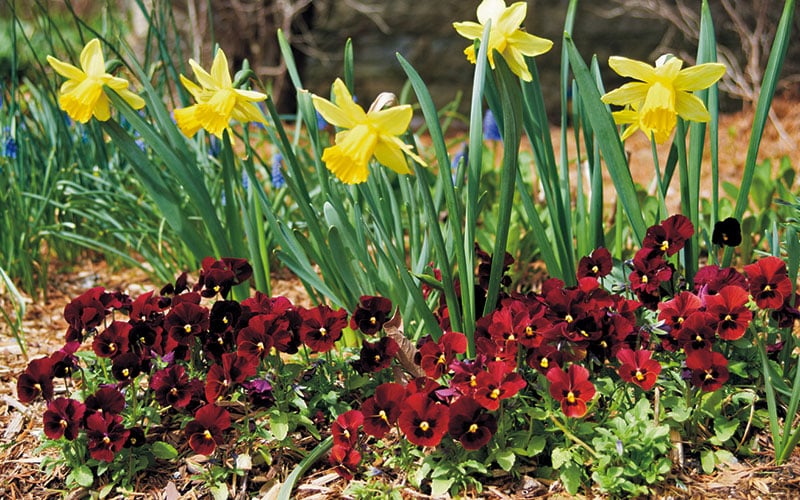
7. Pansies
Pansies are pretty springtime annuals that are characterized by their bright colors and cheery, “face-like” blooms. They are colored purple, yellow, orange, blue, and white, and they frequently have contrasting markings or “whiskers” on them. Grown in garden beds, borders, containers, or hanging baskets, pansies are very adaptable plants.
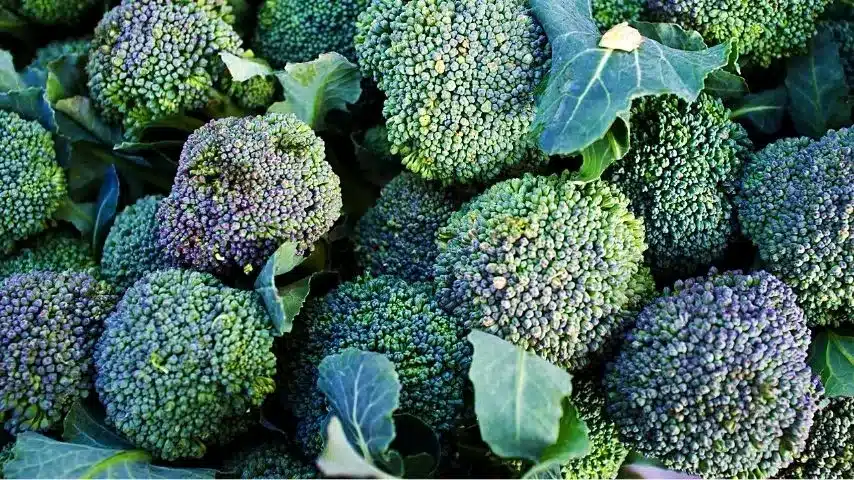
8. Broccoli: Cool Season Vegetable in Your Spring Gardens
Packed with vitamins, minerals, and antioxidants, broccoli is a tasty and healthful cool-season vegetable. It likes rich, well-drained soil and grows best in the milder spring and fall months. When broccoli reaches maturity, cut off the center head and then any side shoots that follow.
These plants, flowers, and veggies offer color, aroma, and fresh produce that can be enjoyed year-round, making them ideal for spring gardens. Whether you’re a novice or an experienced gardener, adding these kinds to your garden will enhance its beauty and abundance.
Conclusion
Summing it up, this article covered the beauty of spring gardens in detail. These retreats are a joyful and peaceful heaven, bursting with color and life. All the plants contribute their own special charm, from colorful tulips to healthy spinach and heady hyacinths. Your garden can become a beautiful haven for everyone to enjoy with meticulous planning and attention to detail.
Bring Life to Your Ordinary Garden!
